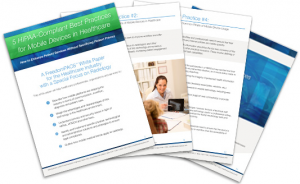Understand the Role of Mobile Devices in the Medical Industry
Medical students, clinicians and patients are harnessing mobile technology in record numbers.
By now, to say healthcare is “going mobile” is an understatement. This technology is a popular topic at professional medical conventions, including both the Radiological Society of North America (RSNA) and Healthcare Information and Management Systems Society (HIMSS).
Residents and fully trained clinicians use at least one mobile device to learn their trade and carry out their work. Likewise, patient demand for medical apps is skyrocketing.
Role in Health and Radiology Education
The role of mobile devices in med school goes way beyond the fact that many students and residents use them in their personal lives.
Stanford University, the University of California-Irvine and multiple others have incorporated them into their medical programs. These institutions are embracing mobile technology in response to how professionals are now practicing their trade and with the goal of improved communication among clinicians, staff workers and patients alike.
Professional Uses
Among other things, physicians, nurses and other health practitioners use these devices to:
- View medical images.
- Access electronic health records.
- Measure and monitor patient vitals.
- Conduct medical research.
- Engage patients and track follow-up.
- Assist in making clinical decisions.
- Educate others on medical topics.
- Respond to emergency situations.
- Communicate with coworkers.
- Complete routine office tasks.
For instance, referring physicians and radiologists use tablets to transmit medical images and communicate in real time about their findings. The high pixel resolution of tablets can aid radiologists in interpreting those images.
Also, a mobile platform can function like a “wireless doctor’s bag” if armed with the right medical apps. They help clinicians measure vitals, make diagnoses, remotely monitor patients or serve as portable, comprehensive health reference guides.
Ehealth and Patient Uses
Of the nearly 14,000 medical apps offered through Apple’s App store, the majority of them are geared toward the public.
Health insurance companies are even sending out “how-to” guides to members on the benefits of mobile technology. Patients are responding, using them to take a more proactive role in personal health, including:
- Tracking fitness goals.
- Assessing general medical topics.
- Pricing prescriptions and finding generic equivalents.
- Monitoring certain conditions and vital signs through apps between visits.
- Accessing their electronic health records and even their clinician’s diagnostic notes (when available).
- Scheduling appointments and contacting their physician directly about their case.
Up next: Best Practice #2: Identify the Benefits of Mobile Devices in Healthcare.
Can’t wait for the next installment? Download the complete white paper from FreedomPACS today!

